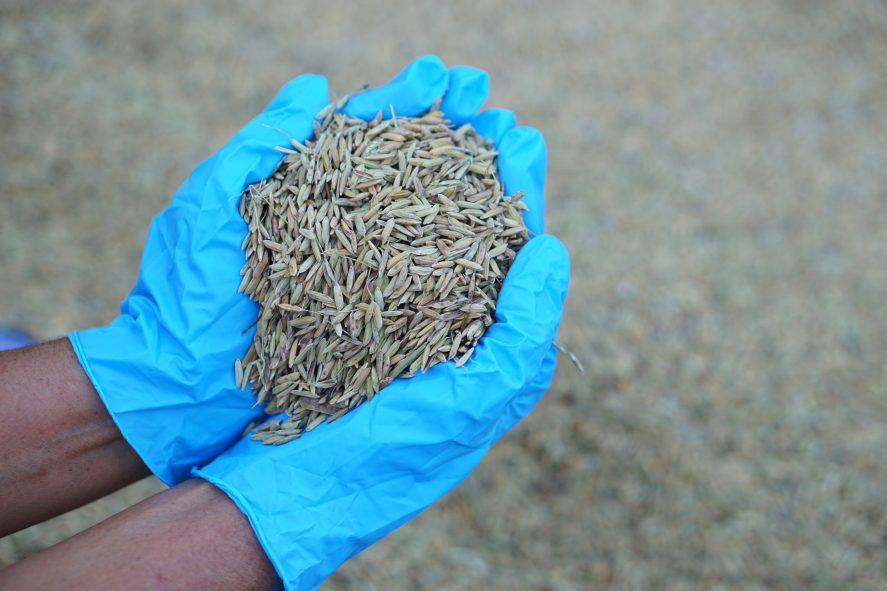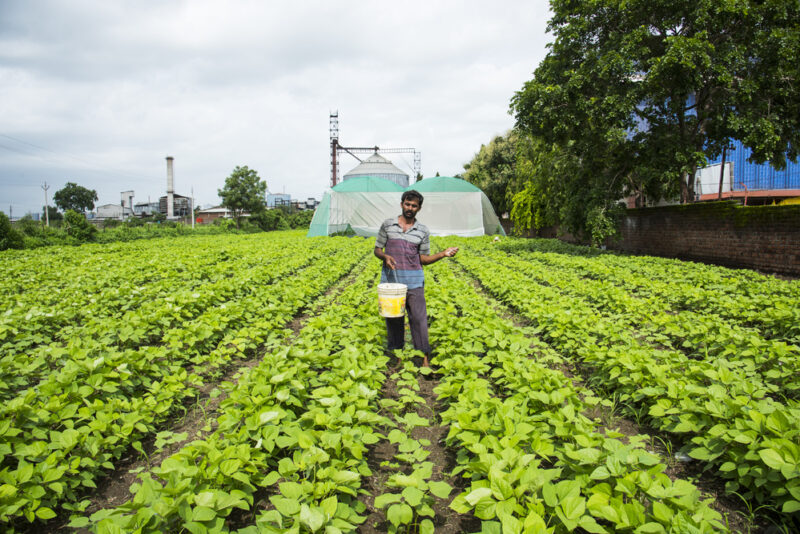Genome Editing: The Next Big Revolution in Indian Agriculture

Innovation has been the foundation of major agricultural advancements that have improved food security in India. While the 1960s saw high-yield dwarf crop varieties enter breeding research, the Green Revolution scaled up breeding for commodity crops to a whole new level, and a focus on agronomic crop management practices backed by government policies pushed Indian agriculture towards a new era of development. In recent years, the focus has shifted to high-yielding and high-value crop production, and ways to advance the field of breeding have been sought. However, while other parts of the world have adopted genome editing as a tool to tackle this challenge, India has until recently been held back by regulatory red tape.
What is genome editing?
Genome editing is a popular method used to make changes to an organism’s DNA. In agriculture, it has been used to design and develop crop varieties with improved disease resistance, climate resilience, and nutritional quality. Popular tools for genome editing include the CRISPR-Cas system, TALENs, and Zinc finger nucleases.
These tools have been shown to be successful in the development of improved crop varieties. Several genome-edited (GE) commodity and specialty crops have been developed and deployed globally, including herbicide-resistant soybean and corn, non-browning mushrooms, and high-yielding tomatoes. High-nutrition rice, wheat, mustard, and millets have also been developed.
From an economic standpoint, the cost of developing genome-edited crops is comparable to that of traditional breeding and the process could even be faster. The process allows for the improvement of crop varieties that can be designed to adapt to an array of growing conditions, taking a big step forward in terms of food security, especially with respect to generating food in areas where demand is the highest.
GE crops are different from traditional GMOs
Unfortunately, gaining public acceptance of GE products has been challenging because they are often categorized as genetically modified organisms (GMOs), a designation that includes transgenic crops created through the insertion of foreign DNA. Additionally, due to a lack of scientific awareness, there have been concerns about carcinogenicity, antibiotic resistance, and nutritional defects resulting from GMOs. While GE crops do not feature foreign DNA, confusion between GEs and GMOs has led to a dip in popularity among consumers and hampered adoption in India.
If the categorization confusion between GE crops and transgenic crops can be overcome through increased awareness, GE products have the potential to be better accepted by consumers.
Revision of GE regulatory guidelines in India
There are at least 16 institutions in India that are actively involved in gene editing research. For advancements to be made, it is important to promote more research and development in this sector. However, widespread interest is limited due to the strict regulation on edited products, including crops. Known as “The Rules, 1989,” these regulations were based on guidelines concerning contained research, biologics, and environmental and food system risks. The regulations were enacted as a result of India considering GE crops as GMOs.
In 2020, the Department of Biotechnology (DBT) developed a framework and risk-assessment guidelines for the regulation of gene-edited organisms in agriculture. Subsequently, this draft was submitted to the public for comments.
Recommendations of particular significance include those made by the National Academy of Agricultural Sciences (NAAS), which prepared a comprehensive policy brief called “Regulatory Framework for Genome Edited Plants.” The NAAS brief calls for the separation of regulatory guidelines for genome-edited organisms from other genetically modified organisms. Instead, they suggest that the global metrics of categorizing GE organisms as SDN-1, SDN-2, and SDN-3 should be implemented in India.
The adoption of genome editing for crop improvement has the potential to bring India into the epicenter of international trade in agricultural products.
SDN stands for site-directed nuclease systems. One or a few nucleotide base pair changes resulting from random mutations during DNA repair fall under SDN-1. SDN-2 encompasses edits involving a few base pairs where the term “few” is generally subjective, and the edits are specified. Certain reports limit the edits to about 20 base pairs. SDN-3 includes larger edits wherein long stretches of a gene is edited or an entire gene is replaced. In its policy brief, the NAAS recommends the de-regularization of SDN-1 and SDN-2 crops, as these edits do not introduce foreign DNA into organisms and are identical to crops developed through conventional breeding.
The Genetic Engineering Appraisal Committee (GEAC) in the Ministry of Environment, Forest, and Climate Change (MoEF&CC) is currently reviewing the guidelines, including the NAAS recommendations. Upon approval, rapid developments in this field are expected to take place.
In a recent development, the MoEF&CC issued an order exempting SDN-1 and SDN-2 GE plants from regulation under Rule 20 of the Manufacture, Use, Import, Export, and Storage of Hazardous Microorganisms/Genetically engineered Organisms or Cells Rules 1989.
Stakeholders’ dialogue on GE regulation
With revisions to GE regulations in the works, understanding the viewpoints of different stakeholders— researchers, private agritech companies, and public sector representatives—is important for moving the technology forward.
Last year, various agencies collaboratively hosted a stakeholders’ dialogue entitled “Enabling Policies for Harnessing the Potential of Genome Editing in Crop Improvement.” Prior to the meeting, there had been no official documentation of stakeholder perceptions and opinions on genome editing. The aim of the dialogue was to develop guidelines on the regulation of gene-edited crops and encourage the adoption of the proposed regulatory policies. They also discussed plans for making genome-editing technology accessible to the research community for its eventual adoption in Indian agriculture.
What is the future of GE technology in India?
The adoption of genome editing for crop improvement has the potential to bring India into the epicenter of international trade in agricultural products. It will also provide great opportunities for the government to push toward making India a global seed hub. Small stakeholder farmers will benefit immensely from high-quality seed development, resulting in higher agricultural returns.
However, this is only possible as the government now revises its regulation of GE crops and provides incentives to better promote genome-editing research in India. It is also imperative that authorities work to raise awareness of the scientific principles behind GE technology so that GE crops are accepted by farmers and consumers alike.
Shivranjani Baruah is a TCI scholar pursuing a PhD in the field of plant pathology and plant-microbe biology.
Featured image: An agricultural researcher examines rice grains. (Photo by tawanroong on Shutterstock)





